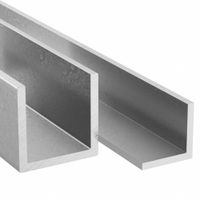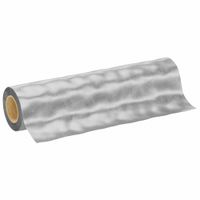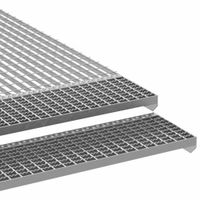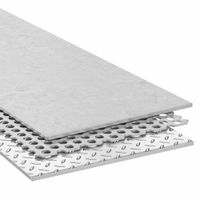Call +(254) 703 030 000 / 751 483 999 / 721 704 777
- Home
- Raw Materials
- Metals
- Aluminum
.....Read More
Frequently Asked Questions
What are the main uses of aluminum?
Aluminum is a versatile metal with a wide range of applications due to its lightweight, corrosion resistance, and excellent conductivity. One of its primary uses is in the transportation industry, where it is utilized in the manufacturing of automobiles, aircraft, and trains. Its lightweight nature helps improve fuel efficiency and reduce emissions. In the construction sector, aluminum is used for building facades, window frames, and roofing due to its durability and resistance to weathering.
In the packaging industry, aluminum is essential for producing cans, foils, and other packaging materials, offering a barrier against light, oxygen, and moisture, thus preserving the contents. The electrical industry benefits from aluminum's conductivity, using it in power lines and cables. Its non-magnetic properties make it suitable for electronic devices and components.
Aluminum is also significant in the consumer goods sector, found in products like kitchen utensils, appliances, and furniture. Its aesthetic appeal and ease of maintenance make it a popular choice for household items. In the aerospace industry, aluminum alloys are crucial for constructing spacecraft and satellites, providing strength without adding excessive weight.
Additionally, aluminum is used in the manufacturing of machinery and equipment, including those in the agricultural and industrial sectors. Its recyclability is another important aspect, as it can be reused without losing its properties, making it an environmentally friendly material. Overall, aluminum's unique combination of properties makes it indispensable across various industries, contributing to technological advancements and sustainable practices.
How is aluminum made?
Aluminum is primarily produced from bauxite ore through the Bayer Process and the Hall-Héroult Process.
1. **Bayer Process**:
- **Mining**: Bauxite, the primary source of aluminum, is mined from the earth.
- **Crushing and Grinding**: The bauxite is crushed and ground into a fine powder.
- **Digestion**: The powder is mixed with a hot solution of sodium hydroxide, which dissolves the aluminum-containing minerals in the bauxite, forming a solution of sodium aluminate.
- **Clarification**: The solution is allowed to settle, separating the clear sodium aluminate solution from the undissolved impurities, known as red mud.
- **Precipitation**: The clear solution is cooled and seeded with aluminum hydroxide crystals, causing aluminum hydroxide to precipitate out.
- **Calcination**: The aluminum hydroxide is heated in rotary kilns or fluidized bed calciners to remove water, producing anhydrous alumina (Al₂O₃).
2. **Hall-Héroult Process**:
- **Electrolysis**: Alumina is dissolved in molten cryolite in electrolytic cells. A direct current is passed through the solution, causing the aluminum ions to migrate to the cathode, where they are reduced to form aluminum metal.
- **Collection**: The molten aluminum collects at the bottom of the cell and is periodically siphoned off.
- **Casting**: The molten aluminum is cast into ingots, billets, or other forms for further processing.
These processes are energy-intensive, requiring significant electricity, especially during electrolysis. The aluminum produced is then used in various industries, including transportation, construction, and packaging, due to its lightweight, corrosion resistance, and recyclability.
What are the properties of aluminum?
Aluminum is a lightweight, silvery-white metal known for its versatility and wide range of applications. It has a low density of about 2.7 g/cm³, making it one of the lightest metals available. This property contributes to its extensive use in industries like aerospace and transportation, where weight reduction is crucial.
Aluminum exhibits excellent corrosion resistance due to the formation of a thin oxide layer on its surface when exposed to air. This protective layer prevents further oxidation, making aluminum ideal for outdoor applications and in environments where it might be exposed to moisture.
The metal is highly malleable and ductile, allowing it to be easily formed into various shapes and products through processes like rolling, extrusion, and forging. Its ductility also enables it to be drawn into wires.
Aluminum has good thermal and electrical conductivity, though it is not as conductive as copper. Its thermal conductivity makes it suitable for heat exchangers and cooking utensils, while its electrical conductivity is utilized in power transmission lines.
The metal is non-magnetic and non-sparking, which is beneficial in applications where these properties are required, such as in electronics and in environments with flammable materials.
Aluminum is also recyclable, retaining its properties after recycling, which makes it an environmentally friendly material. Its recyclability contributes to energy savings and reduced environmental impact.
In terms of mechanical properties, aluminum alloys can be engineered to enhance strength, hardness, and other characteristics, making them suitable for a wide range of structural applications. However, pure aluminum is relatively soft and has lower tensile strength compared to its alloys.
Overall, aluminum's combination of light weight, corrosion resistance, formability, and conductivity makes it a valuable material across numerous industries.
How does aluminum compare to other metals?
Aluminum is a lightweight, silvery-white metal known for its versatility and wide range of applications. Compared to other metals, aluminum has several distinct characteristics:
1. **Weight**: Aluminum is significantly lighter than many other metals, such as steel and copper. Its low density (about 2.7 g/cm³) makes it ideal for applications where weight reduction is crucial, such as in the aerospace and automotive industries.
2. **Corrosion Resistance**: Aluminum naturally forms a thin oxide layer when exposed to air, which protects it from further corrosion. This makes it more resistant to rust compared to metals like iron and steel, which require additional coatings or treatments to prevent corrosion.
3. **Conductivity**: While not as conductive as copper, aluminum is still a good conductor of electricity and is often used in electrical transmission lines. Its conductivity is about 61% that of copper, but its lower density allows for longer spans with less structural support.
4. **Strength-to-Weight Ratio**: Aluminum has a high strength-to-weight ratio, making it suitable for structural applications. Although not as strong as steel, it can be alloyed with other elements like magnesium and silicon to enhance its strength.
5. **Malleability and Ductility**: Aluminum is highly malleable and ductile, allowing it to be easily formed into various shapes and products, such as sheets, foils, and wires.
6. **Recyclability**: Aluminum is 100% recyclable without losing its properties, making it an environmentally friendly option. Recycling aluminum requires only about 5% of the energy needed to produce new aluminum from ore.
7. **Cost**: Aluminum is generally more expensive than steel but cheaper than copper. Its cost-effectiveness, combined with its properties, makes it a popular choice for many industries.
Overall, aluminum's unique combination of properties makes it a valuable material across numerous sectors, offering advantages over other metals in specific applications.
Is aluminum recyclable?
Yes, aluminum is highly recyclable. It can be recycled repeatedly without losing its quality or properties. The recycling process involves collecting aluminum products, such as cans, foil, and other items, and then cleaning and shredding them. The shredded aluminum is melted in a furnace and then cast into new products. This process is energy-efficient, using only about 5% of the energy required to produce new aluminum from raw materials. Recycling aluminum also reduces the need for mining bauxite ore, conserving natural resources and reducing environmental impact. Additionally, recycling aluminum helps reduce greenhouse gas emissions and landfill waste, making it an environmentally friendly option.
What are the different types of aluminum products?
Aluminum products are diverse and cater to various industries due to aluminum's lightweight, corrosion resistance, and high conductivity. Here are the main types:
1. **Aluminum Sheets and Plates**: Used in automotive, aerospace, and construction, sheets are thin and flexible, while plates are thicker and used for structural applications.
2. **Aluminum Foil**: Extremely thin sheets used for packaging, insulation, and cooking. It provides a barrier to light, oxygen, and moisture.
3. **Aluminum Extrusions**: Created by forcing aluminum through a die, these are used in construction, automotive, and consumer goods for frames, rails, and other structural components.
4. **Aluminum Rods and Bars**: Used in manufacturing and construction, these are solid and can be machined into various components.
5. **Aluminum Tubes and Pipes**: Hollow and used in plumbing, HVAC systems, and structural applications, offering strength and corrosion resistance.
6. **Aluminum Castings**: Formed by pouring molten aluminum into molds, used in automotive and machinery parts for complex shapes.
7. **Aluminum Forgings**: Produced by shaping aluminum under high pressure, used in aerospace and automotive for high-strength components.
8. **Aluminum Powders and Pastes**: Used in pyrotechnics, paints, and as a reducing agent in chemical reactions.
9. **Aluminum Alloys**: Mixed with other metals to enhance properties, used in aerospace, automotive, and construction for tailored applications.
10. **Aluminum Cans and Packaging**: Widely used for beverages and food due to its recyclability and protective qualities.
11. **Aluminum Wires and Cables**: Used in electrical applications for their conductivity and lightweight properties.
These products are integral to modern industry, offering versatility and efficiency across various applications.
How does aluminum resist corrosion?
Aluminum resists corrosion primarily through the formation of a thin, protective oxide layer on its surface. When aluminum is exposed to air, it reacts with oxygen to form aluminum oxide (Al2O3). This oxide layer is extremely thin, typically about 2-3 nanometers thick, but it is highly effective in protecting the underlying metal from further oxidation and corrosion.
The aluminum oxide layer is adherent, meaning it sticks tightly to the aluminum surface, and it is also impermeable, preventing oxygen, water, and other corrosive agents from reaching the metal beneath. This barrier effect is crucial in environments where aluminum might otherwise be prone to corrosion, such as in moist or salty conditions.
Additionally, the oxide layer is self-healing. If the surface is scratched or damaged, exposing the bare aluminum, the metal will quickly react with oxygen to reform the protective oxide layer. This self-repairing property ensures that aluminum maintains its resistance to corrosion over time.
Aluminum's corrosion resistance can be further enhanced through processes such as anodizing, which thickens the oxide layer, or by applying protective coatings like paints or sealants. These methods provide additional barriers against environmental factors that could lead to corrosion.
Overall, the natural formation of the aluminum oxide layer, its adherence, impermeability, and self-healing properties are key factors that contribute to aluminum's excellent resistance to corrosion, making it a preferred material in many applications where durability and longevity are important.





